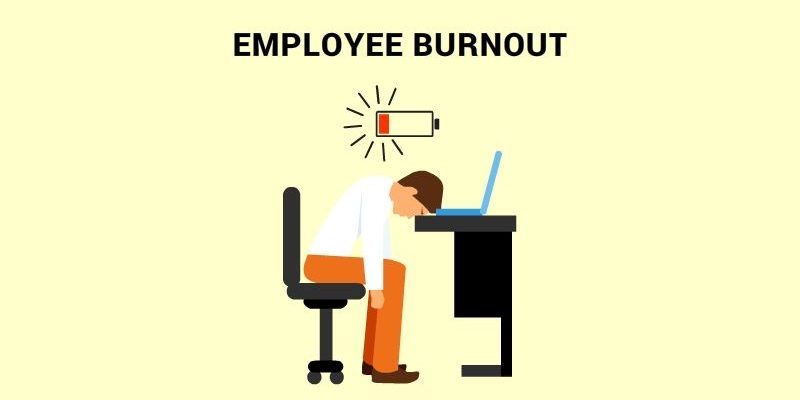
Insanely powerful ways you should follow for helping burn out employees
Burn out employees is one of the significant workspace issues these days. It occurs when immense pressure is put on a person, culminating in “chronic stress.” This pressure could be caused by one or numerous things, depending on the person’s situation.

At work Burn out employees signs could be
- Job insecurity.
- Lack of feedback can lead to anxiety and uncertainty.
- Clashes with other staff members.
- Feeling undervalued.
- Not feeling like a team member.
As an employer, you should ensure your workers remain motivated and productive. But sometimes, even the best performer of your team can begin to struggle to burn out employees. In those cases, you need to pay attention to them to recognise any problems they may be facing and get the right action before it’s too late. Use these best tips managers can use to help valuable employees get back on track even during times of stress or boredom to be a burn out employees.

The best tips to help your valuable employees get back on track from being a burn out employees.
- Ask and listen.
It’s essential to have a sit-down meeting with them and learn more about what’s bothering them to understand how you can help them.
By having an honest discussion with your employees, you can discover if they are stressed or fatigued or if there is something more going on. Ask questions, but also be calm and listen to the answers rather than relying on what you think you know.
- Change it up and be understanding.
It’s necessary to keep in mind that employees may often be hesitant to let you comprehend they are stressed or annoyed because they don’t want this to affect their job security. The situation becomes more critical when bosses take these complaints wrong. So, instead of taking it personally or assessing the person for it, work with them to change up the work or proffer them a break. Understanding and working collectively in a communicative, open way goes a long way.
- Offer more flexibility.
Once you figure out what’s going on, it’s essential to offer employees more flexibility. Being in the very environment for hours at a time, five days a week would make anyone go insane after a while.
Flexible options management could offer to include Fridays off or permitting employees to work from home a few days. It reveals them you care for them, and their gratitude will manifest in the quality of their work. When employees feel in control, they are more productive and less stressed.
- Give them a side project.
When it comes to eradicating the potential for boredom, it’s crucial to provide a task that is high interest but low priority. While talking about the significance of helping your employees feel challenged enough to stay with your company.
However, designating side projects can backfire if you’re not attentive of how much hours employees need to pay on them, which can possibly lead to them feeling overworked. Side projects may involve a lot of responsibility or planning. So, tell them to focus on that when they have time.
- Create friendly competition.
Another way of keeping employees engaged or helping them get through a stressful time is to create a friendly competition. For instance, create a monthly work-related challenge to compete in. It’s work-related, so it helps them recapture their enjoyment for their responsibilities and acquire new things, but at the same time, it lets them have a little fun, as well.
- Encourage them to learn new skills.
Encourage employees to have an interest in something they do not know. Encouraging to learn something new either from books or online courses is a good alternative for tired employees to refresh themself. And always remember that their growth is also part of your firm’s growth.
- Set appealing long-term goals.
One of the most motivating aspects for an employee is the knowledge that they have a clear target to work toward every day. Boredom and burnout at the job can be a result of tunnel vision. Your team members may not be able to focus on the big picture if the daily grind is too distracting. To mitigate this issue, remind your team of the long-term goals they’re working toward. For making these goals even more appealing, employers could also tie them to performance-based bonuses.
Remember, burn out employees is a serious issue. It’s not just your employee’s work that suffers, but their health, mental state, and the lives of the people around them.
Burn out employees doesn’t have a cookie-cutter fix. But you must fix it if you want to reduce employee turnover, absenteeism, or poor customer experience. Do whatever you can to fix the damage, and get your employees on the track to maintain the right work/life balance.
Reach us for your recruitment needs at Hand Phone: +91 7795547089 or Email us at team@bssrecruit.com.
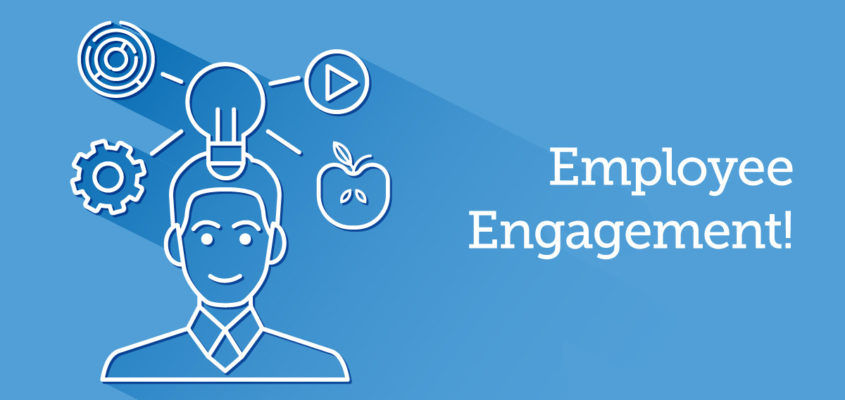
Why is employee engagement worth for your company?
Employee Engagement: The state at which there is correlative confidence between the employee and leadership. To do what’s accurate. However, whenever and with whomever.

“Motivating employees to work at their full potential is the main premise of successful management.”
— Eraldo Banovac
How do you make employees capable of going the extra mile and performing at the peak of their potential? Some say job satisfaction and happiness are pivotal elements of exceptional employee commitment. But it is not enough. The real key to outstanding commitment and performance is employee engagement.
What exactly is employee engagement?
- Employee engagement is forming an energetic and enthused workforce that puts its heart and soul into everything it does.
- It is a priority at every level of a business, and organizations with engaged employees outperform those with lower engagement levels.
Here are seven ways to generate engagement and get your employees charged up about going to work in the morning.
“Research indicates that workers have three prime needs: Interesting work, recognition for doing a good job, and being let in on things that are going on in the company.”— Zig Ziglar
Seven ways to develop employee engagement in your workplace
- Appreciate your employees
A business that misses appreciating its employees will surely suffer. By contrast, those that express appreciation often observe a spike in engaging employees. Recognition can come in various forms. Managers can send out personal emails to employees complimenting them on a job well done. Or the company can bestow its appreciation via social media posts or at companywide gatherings.
No matter how it gets done, recognition can boost the confidence of your employees and encourage them to take on more responsibility. Letting employees acknowledge that they are appreciated can positively impact on their commitment.
- Create a Collaborative Culture
Engagement falls flat when employees get entangled in a culture of poor communication, tight deadlines, and countless, unproductive meetings. Designing a collaborative culture that champions teamwork and breaks down silos will let employees be their real selves and help them feel secure about sharing both their successes and their failures. A collaborative culture can also help strengthen trust and good harmony among your employees. It enables employees to cross lines that demark bounds of expertise, getting them to engage more deeply in the overall success of the firm. By being open and available, you are fostering a positive work atmosphere that leads to a more thriving business.
- Recruit Team Players
Recruit people who like to work in teams. That’s the way of today’s business world. Reclusive corner-cube, subject matter experts who may the best be left alone are evident in today’s workplace. Work has become intensively collaborative. Teams accomplish all missions. Ownership and accountability often get distributed. If you want to develop a highly engaged workforce, you need to be remarkably selective in your hiring. Engagement begins right at the first job interview. Ensure your hiring process is engagement-centric by screening for candidates who can thrive in a team-oriented workspace.
- Level up Your Performance Reviews
Yearly performance reviews can provide employees with tons of comments and feedback but could come off as process-driven and routine. Consider executing a continuous, year-round feedback loop instead. It includes formal meetings or even informal engagements, often ad hoc, where employees and supervisors engage after finishing the work. This way, feedback is authentic, timely, and more unbiased. Managers can measure employee performance and address concerns early before they become a big problem. Employees have straight and immediate context for this feedback. You can further involve your workforce and raise achievement with 360-degree feedback and peer-to-peer reviews that let you promptly gather insights about each member of the team.
“There is little success where there is little laughter.”
— Andrew Carnegie
- Encourage the Free Flow of Ideas
The pleasure and pride we feel when our ideas are accepted and implemented are invaluable. When employees feel that you consider their opinions seriously, regardless of where they stand in the company hierarchy, they’ll volunteer more often, adding more exciting ideas and resolutions. Innovation happens best this way. The judgment-free brainstorming sessions spark creativity and allow your employees to come up with smart ideas. They pose questions, appreciate contributions, make suggestions, and don’t say anything demotivating, even if you don’t agree with an idea.
- Invest in Career Development
Work might change, but human nature doesn’t. Most of the people seek to enhance their strengths and reach their full potential. Your employees should recognise that you care about their growth and that new opportunities are waiting for them just around the corner. Prove this by investing in training them for their growth. Offer a rotational program where they get to encounter new and different areas of the business. Create career maps that encourage employees to explore their career advancement possibilities and envision areas of growth. For instance, if you hire an employee who speaks French, train that employee to help you launch your product internationally. You might just uncover an entirely new skill.
A business succeeds when employees are engaged and raring to go. The workplace you design can go beyond mere employee productivity and can drive deep engagement. Show your workforce that you care, and they will go the extra mile.
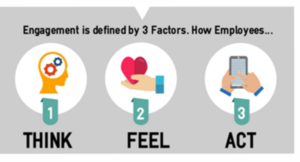
“Engaged employees are psychological “owners,” drive performance and innovation, and move the organisation forward.”— Gallup Report 2017
Reach us for your recruitment needs at Hand Phone: +91 7795547089 or Email us at team@bssrecruit.com.

The best shortcuts to choose between two-star candidates
Two-star candidates in the shortlisting stage are quite a situation to handle for a recruitment professional.

As a recruiter or hiring manager, the recruitment process can be extensive and potentially overwhelming. Still, sometimes you get to the end of the road, and you just can’t make up your mind between the two final candidates. They may have very similar qualifications, work experience and excellent references. You have tested them several ways, but you still don’t know which one to pick because two-star candidates are both well capable of handling the job.
We know that it is a difficult situation for you, but at the end of the day, you need to decide on the best person for the position.
- So, how do you go about a situation like this?
- What steps can employers take to choose between two equally qualified candidates effectively?
In today’s article, we examine a few factors you should look at when you are struggling to choose one candidate over another or a choice between two-star candidates.

- Focus on the mission-critical skills
Take a close glance at the job description and re-focus on the two or three mission-critical skills. Consider the inner strengths and weaknesses of your company, as well as the opportunities and threats the team encounters. Although your candidates are likely to have a different balance of skills, even though, they are equally qualified. So, if you take a closer look, one candidate may be better fitted to the position than the other.
- Conduct a 360-degree assessment
Don’t be stopped by the potential cost and administrative hassle of an additional interview; if necessary, invite them in for a further discussion. It could be a 360-degree interview where you let them interact and engage with co-employees, subordinates, superiors, internal clients and suppliers. This 360-degree perspective may help to assess which person best suits your mission-critical skills, making it easier for you to decide the right one. It could even avert the less keen applicant, further informing your selection decision.
- Gauge their enthusiasm
One way to do this is to probe them how enthusiastic they are about the job role, but it will be more effective if you get them to demonstrate enthusiasm by putting an obstacle in the way. Invite them in or at least assess their interest in attending a trial morning where they can compete in a meeting or present to the team. Gauge their enthusiasm;
- Do they seem willing?
- Will they move mountains to show up and do they make proactive suggestions?
- Also, consider what barriers they have had to surmount in the interview process.
- Has one had to put more endeavour in than the other to get this far, e.g. a greater interview commute?
It may soon become evident that one candidate is much keener than the other on the opportunity.
- View them in a relaxed setting
It is a perfect opportunity to throw a curveball and invite them in for an informal interview in a comfortable environment where they may perform in a way that they haven’t done during the formal assessment process. You may see another angle, perspective, strength and weaknesses, which might tip the balance into one candidate’s favour. You will also be able to understand just how well they get into the culture, which could determine their fitness for the job.
- Put them on the spot
Another alternative is to put each of the two-star candidates on the spot. Of course, you can’t offer them both the job, but you can suggest to each of them, that if you were to provide them with the job, what would be the obstacles to acceptance and how would they strive to overcome them.
- Assume terms can be agreed, enthusiastic, serious candidates should be able to answer an emphatic yes.
- Do not list too many barriers to them joining.
- Recognize ways to overcome barriers, such as, “I am sure we could come to some sort of agreement on that particular issue.”
Young professionals who are in quest of a great job will always be there in the market. But you must find out who the best is really and who should have a place in your office. The quicker you make your choice, the faster you will be hiring the person who is ideal for your company. Never make a hasty decision, though. Think of the current things that your company needs. Who do you think will be able to provide with the best.
All the best for your next tight hiring decision!

The best way to Hire the best talents is to reach the best Recruiting firm. we can be reached at Hand Phone: +91 7795547089 or Email us at team@bssrecruit.com.
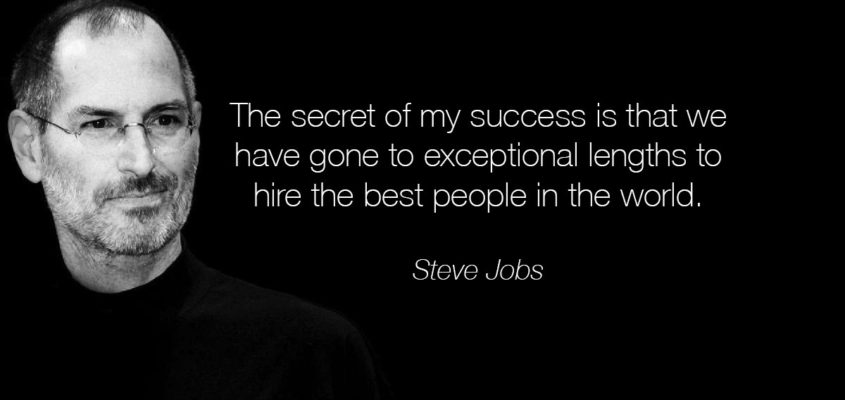
The most effective tactics to maximize hiring the best candidates
Hiring the best candidates who are smarter than you are. Whose talents surpass yours. Give them opportunities for growth. It’s the smart thing to do,
“Hiring people is a form of investing. You have to do your research and make sure you are spending your resources on the right pick.”— Warren Buffet
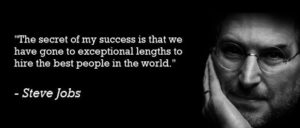
Everyone knows that talented employees are inevitable to the success of an organisation. If your firm has the brightest and the most creative minds, then you can win all the corporate goals. But while employing skilled team members to innovate and produce excellent results is a prerequisite of success, it is equally essential to avoid ill-equipped and poorly performing players. After all, a chain is only as strong as its weakest link.
Unfortunately, bad hires are an all too common occurrence in the business world these days. But where are managers going wrong, and how can they avoid hiring ill-equipped candidates? At the end of the day, how will they provide the company and clients with candidates that are going to make an impact? Read the blog further to know how great recruiters succeed in picking out the ideal candidate.
“Hiring people are like making friends. Pick good ones, and they’ll enrich your life. Make bad choices, and they’ll bring you down.”— Jason Fried

How to succeed in recruiting the ideal candidate?
- Keep the big picture in your mind
Have a clear strategy about your company in mind that you can refer to whenever you are looking to fill a position. You can keep it on a sticky note, typed in your smartphone or simply note it on your memory. When learning about a potential candidate, thoroughly check if their character, skills and experience are the best fit for leading your organization to grow. Ask yourself, “Will this person help my firm reach our ultimate vision?” If you can’t assuredly answer yes, it’s time to keep sourcing.
- Dig Deeper
We all know that holding the right skills is not sufficient to qualify a candidate as the right hire. As a recruiter, your job is to hunt down the candidates who are not only qualified for the job but also fit for the company culture. Ask the right queries and don’t be hesitant to dig a little deeper in the interview process. Identify which values or characteristics your successful employees commonly possess, and then develop interview questions that help pick out the candidates with similar qualities.
- Think outside the Box
Emphasize the job requirement rather than the skills. If a candidate has previously worked in a similar job, they probably have the skills or the ability to learn it. So, instead of listing every skill your candidate should possess, clearly explain the key job expectations. It will help enhance your talent community by including a more diverse group of candidates with diverse expertise and backgrounds without sacrificing the quality of hire.
If you want to recruit passive candidates, you need to figure out how to target them effectively for a career move. Try to visualise the career story of your top three ideal candidates.
- For which roles did they apply before?
- What are the skills they possess that made them a perfect fit in the current position?
Once you have answered these type questions, you will have a clear idea of how to make your job postings resonate with inactive candidates.
A company should limit its growth based on its ability to attract enough of the right people.”— Jim Collins

- Improve yourself constantly
Master and strengthen all your sources for candidates. It includes raising the yield and quality of applicants coming in via your job posting efforts. To do this, relentlessly analyse what makes a job posting compelling, try new marketing tactics, test your actions and use what you have learned to strengthen your job ads. Also, stay up-to-date on the latest recruiting news and best methods so that you can leverage the information.
- Nurture your Talent Community
Regularly reach out to candidates in your Talent Community to examine what’s new with them, if they have gained any new skills, or if they have referrals to suggest from their personal network. You can keep in touch with the new and old contacts via the phone, email, message, or physical gatherings. The amount of input you invest produces a corresponding volume of output. That’s why it’s so crucial for recruiters to create and sustain connections with their Talent Community, past clients and alumni.
The main outcome is that you need to initiate communications to enhance awareness for your positions. So, become an exceptional networker, who is proficient in recruiting passive candidates.
- Track Metrics
Identifying the results of your attempts every day is the best way to improve your hiring practices. Utilize analytical tools that help you comprehend your recruiting initiatives from a high-level perspective. By reviewing cutting recruitment metrics, you can decipher which recruiting strategies are working and which are not. Then, you can rearrange your efforts to maximize your ROI.
- Be Proactive
Instead of concentrating entirely on current open requests, start thinking about the future recruiting needs of your firm.
- Are specific departments growing?
- Are any leaders planning on leaving soon?
Based on your firm’s expectations, start developing a robust talent network of prospective candidates who would shine in the roles that may become available. As a result, you will be prepared to the source once the organisation decides to hire for the vacant chair.
Becoming an excellent recruiter takes persistence, strategy, and the passion for connecting organizations with the right candidates. If you have the determination to succeed, coupled with the right tactics and tools, you can start aggressively honing your recruiting skills today. Try incorporating these seven recruitment best practices into your day-to-day functions to improve your actions and produce great results.

“Lots of people want to ride with you in the limo, but what you want is someone who will take the bus with you when the limo breaks down.”
— Oprah Winfrey
Reach us for Hiring the best candidates with the leading Recruitment consultancy at Hand Phone: +91 7795547089 or Email us at team@bssrecruit.com.
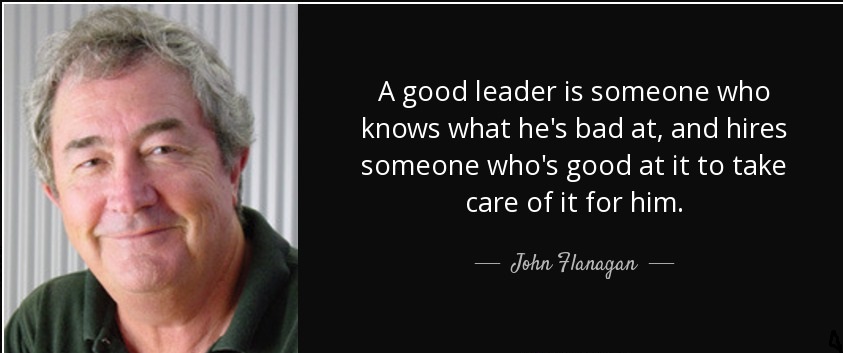
This is what happens in your business when you have a bad hire
A bad hire can be a costly affair. Recruiting the right candidate can be exhausting. Keep your eyes on the main goal: getting the right employee who adds value to your company.
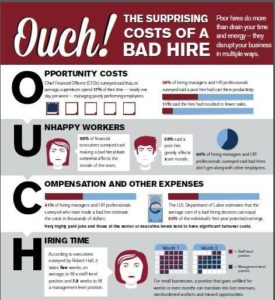
“We can never fall short when it comes to recruiting, hiring, maintaining and growing our workforce. It is the employees who make our organization’s success a reality.”
― Vern Dosch, Wired Differently
Hiring the right employee for your business is not less than a tedious task. However, there is stiff competition for top candidates these days. Companies struggle to find and keep quality talent. Even though HR professionals use many different hiring formulas to hunt down the best person, sometimes you may end up with the wrong hire. Nothing is more disappointing than realising the person you thought would be your next superstar isn’t even a one-hit-wonder.
A bad hire can not only a challenge and time-consuming issue but also cost the company a lot of money and adds pressure to the process. It becomes one of the most expensive mistakes that can have a devastating effect on your business. Consider the impact a bad hire can cause you in the following four areas of your business.
Hiring bad eggs can impact your ability to hire top talent in the future.Greg Brockman, Stripe CTO
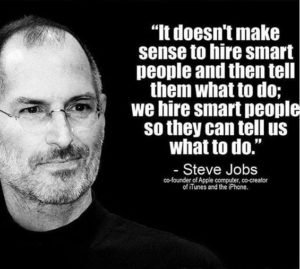
The impact a bad hire can cause in your business
- Decreased productivity
If a person narrated in a CV is not who the candidate really is, they may not be able to perform well in the job role that you are hiring them. It could harm productivity, as other employees need to work harder to meet the targets and deadlines, damaging group morale. Bad hires can drive the top employers away, often right into the hands of the competition, taking the skills, knowledge and expertise that you have helped develop with them. A bad hire can also lower the standards of the rest of the team.
- Impact on customers
Bad hires can’t seem to clasp their responsibilities in the job role. Even if they can, they will always look for shortcuts, or making customers’ dismay due to their lack of customer service. The cost of acquiring new clients is way more expensive than keeping existing customers. One wrong interaction with a bad hire may cause the customers to walk away. Eventually, your brand and reputation will suffer.
- Cultural imbalance
Having cracks in the culture, because other members don’t add value to the team, can harm the whole workforce.
- Ensure that the new hires have the right experience and qualifications to meet the requirements of the role.
- Assess how they will fit in with your company’s culture and your colleagues.
Both these points should be at the top of your list of priorities when you make the hiring decision.
- Time Spent on Performance Management
A bad hire will suck up the time and focus of an employer. Instead of coaching and developing other employees, he gets sucked into an endless cycle of having to listen to complaints from others, gives corrective feedback, micromanaging, handing out discipline, and eventually get dragged through a painful disciplinary process. Trying to get a wrong hire to meet even minimum expectations is like playing management “whack-a-mole.” One problem may temporarily go away, but it soon gets replaced with another issue.
“If you make a hiring mistake, make the change quickly. Don’t ignore problems. Don’t assume it will get better.”
― Ziad K. Abdelnour, Economic Warfare: Secrets of Wealth Creation in the Age of Welfare Politics

- Reputation
Bad hires, especially those who are communicating with clients, can damage relationships if customers don’t get treated well. Relationships are not easy to rebuild once the trust has broken. Companies have to make sure that employees representing their business can enhance or maintain their reputation and goodwill, not harm it.
There is also internal reputation management that you need to consider. When a firm recruit and then subsequently keeps a lousy hire, colleagues can question the top-level management’s ability to make smart decisions. It can injure the relationship between the administration and the staff in a business.
- Financial impact
Lastly, let’s not forget the money. A hiring mistake can cost a business three times the person’s salary, due to the money spent on training, lost productivity and increased staff turnover.
So, whether you are hiring an entry-level employee or senior executive, the cost of a bad hire is high. It can bring down your team, manager, or the whole organisation. While there are no guarantees, taking more time to cast a wide net and doing your due diligence in finalising employees is well worth the effort and will minimize the chances of a bad hire.
“If you can hire people whose passion intersects with the job, they won’t require any supervision at all. They will manage themselves better than anyone could ever manage them. Their fire comes from within, not from without. Their motivation is internal, not external.”Stephen Covey
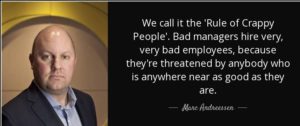
Reach us for your recruitment needs at Hand Phone: +91 7795547089 or Email us at team@bssrecruit.com.

Try these seven tips to improve your candidate experience
Improve your candidate experience with the positivity that he may reciprocate with the clients he manages.

“You can have the best strategy and the best building in the world, but if you don’t have the hearts and minds of the people who work with you, none of it comes to life.”
― Renee West, Luxor and Excalibur Hotel
A strong and highly skilled employee base can give your firm an advantage over your competitors, generating more business and higher profits.
When it comes to recruiting, you can’t pour every ounce of your energy into wooing that one perfect applicant. It’s essential to treat all of your candidates well. Great candidate experiences can reflect greatly on your company, which will increase the chances of people wanting to work for you. Improving the candidate experience is crucial to attracting a quality pool of applicants and Increases the percentage of successful, long-term hires.
How can you generate a positive and Improve your candidate experience, which can have a tremendous ripple effect on your business and your talent pool? Here are some ideas to consider.
“We can never fall short when it comes to recruiting, hiring, maintaining and growing our workforce. It is the employees who make our organization’s success a reality.”
― Vern Dosch, Wired Differently

How to generate a positive and Improve your candidate experience?
- Let them know how to apply
Be clear on how you want candidates to apply for the position and what they need to send you in response to your post. If you want a cover letter, say you want a cover letter and let them know exactly where to send it. Mention like ‘to apply for this position, please send a cover letter and your CV to apply@companyname.com’.
- Don’t make the application process too long
Application processes which are too long often block people from applying for the job position. Your company may not be the only one a candidate will consider so make it a positive experience. Only ask for important information in the application process as you don’t want candidates to abandon the application process halfway through.
- Acknowledge every application received
Not every CV you receive will be someone of interest. However, it isn’t an excuse to throw their CV to one side and forget about them. You can mail them and offer them some insight into why the role isn’t right for them. It reflects greatly on you and your company. If you don’t have time to send feedback to them, then a simple email saying they have been unsuccessful will be easy and much better than nothing.
“Hiring should be like dating. A great marriage does not happen in a 30 minutes interview.”
― kamil Toume
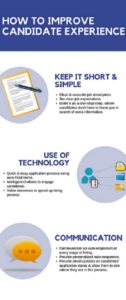
- Assess applications quickly
If you are serious about finding someone great for a position, you need to stay on top of things. If you wait more days to look through applications, you may find those candidates snapped up by your competitors by the time you make your decision to meet them. Set yourself sometime every day to go through the CV’s sent through that day.
- Let candidates know your recruitment process
You may know about your hiring process, but your applicants don’t. Every recruitment process is different. So, ensure they know the details of how long the interview will be, how many stages you are conducting, and where it will be conducted. Letting the applicants know what the recruitment process will be will reduce the number of people who pull out of the process.
- Provide feedback to rejected candidates
You cannot hire everyone, but it’s beneficial to let them know why they didn’t make it possible. Calling them and let them know why they haven’t been successful doesn’t take a long time. It gives the person with valuable insights on what they can do to improve the next time. Adding value to the hiring process through feedback creates a recruitment process which is appreciated by everyone involved.
- Make sure you have a smooth onboarding process
The recruitment process doesn’t stop once the right person has signed their contract. The nurturing process starts through their current notice period – keep in contact with them, so they don’t change their mind. Look after them when they start so that they feel welcome and make sure they seamlessly become one of the team.
Top applicants want to work with cutting-edge companies. So, job seekers will be expecting a higher level of engagement and convenience at every stage of the application process. What’s clear is that if you keep your candidates happy, your company will be even more pleased.
“If you hire only those people you understand, the company will never get people better than you are. Always remember that you often find outstanding people among those you don’t particularly like.”
― Soichiro Honda
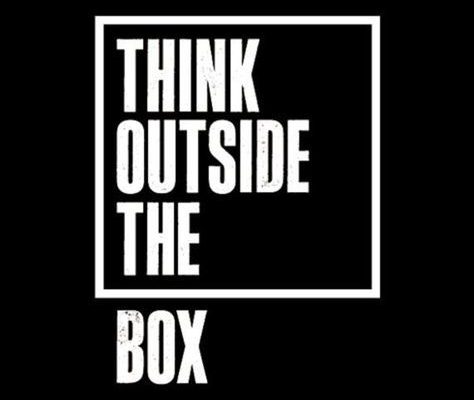
The most overlooked solutions to boost creativity in the workplace
Boost creativity in the workplace to accelerate the productivity of the employees.
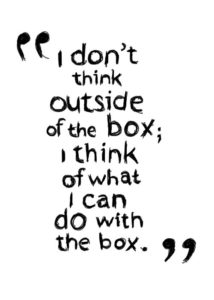
The most overlooked solutions to boost creativity in the workplace
For innovation to flourish, organizations must create an environment that fosters creativity; bringing together multi-talented groups of people who work in close collaboration together — exchanging knowledge, ideas and shaping the direction of the future.
—Linda Naiman
Creativity is now one of the top skills most workplaces are looking for in their employees. The creative talents of employees are the key to higher levels of engagement, happiness and fresh business ideas. In most companies, people with creative mindsets are missing. You can’t force creativity to happen, but you can develop a creative workplace. It is the reason most of the employers encourage their staff to learn new skills or get involved in new leisure activities. It establishes a workplace environment that stimulates creativity, which motivates the workers to do their best for their company.
Whether you consider yourself as creative or not, you should create room for improvement in your workspace. In this article, we included a few tips on how to spark creativity in your company.
Creativity is the power to create something new, to reach deep into our subconscious for that “aha” solution. Sometimes it happens in a nanosecond, and sometimes that solution can take a lifetime to reveal itself.
—Linda Naiman (People talk Magazine Spring 2004)

Why is creativity so important?
The most rewarding impact of creativity is it can unlock more meaningful results. When you keep working the same way you always have, there’s no way to take risks and find new ways to execute tasks, which eliminates the possibility of creativity in the workplace. Here are some ways to help your team feel inspired.
How to spark and boost creativity in the workplace
Establish a company culture
Work culture plays a vital role in developing creativity. When workers get reasons to be excited to come to work, you’ve succeeded in creating a tremendous company culture. On the other hand, dysfunctional company cultures can severely impact creativity and overall mental health of the employee. The excellent way to establish a company culture to spur creativity is just to give your employees a purpose for their work. From purpose, a culture blooms.
Let your employees take risks and experiments
Cultivate a culture that is ready to take risks, which also rewards new creative experimentation. Most of the time, employees aren’t bringing new solutions or ideas because there is a fear of making a mistake. Employees need guidance support and allowance that they can fail in the pursuit of creation.
One of the ideal ways to implement this is by being open to suggestions and feedback from your workforce or fellow employees. Sometimes this means having an open-door policy or creating an anonymous space for people to share their ideas.
Look to co-workers with great emotional intelligence
The workplace can be a great place for sharing knowledge. There’s an excellent opportunity to learn various skills and garner new knowledge from your peers in the firm. Encourage your teammates to share what they know with everyone on the team.
It can help workers discover new interests and spark new creative pursuits that they can bring back to their role. It’s also essential to develop your emotional intelligence and look to others who display high rates of it for guidance.

“Good teams become great ones when members trust each other enough to surrender the ‘me’ for the ‘we.’
– Phil Jackson create a space for meditation and self-reflection
When the busy schedules strike, it’s easy for people to start getting too focused on their work and forget about the bigger picture. During times like these, creativity is lacking. During this time, you should let them step out of the madness for a few mindful moments daily.
Getting people into the routine of conducting self-reflections can help them centre themselves and avoid the stress that limits creativity. Just a simple check-in with you does wonders. Cultivating a daily schedule for meditation can take this to the next level. Emptying the mind is an excellent way to fill it.
A relaxed, positive workplace atmosphere is more conducive to innovative thoughts than a tense one. People need specific tools to think creatively, which includes keeping their knowledge and expertise up-to-date. With the support and the right management approach, you can not only help your staff enhance their contributions but also make yours a better workplace.

“You can’t use up creativity. The more you use, the more you have”
– maya angelou
Reach us for your recruitment needs at Hand Phone: +91 7795547089 or Email us at team@bssrecruit.com.
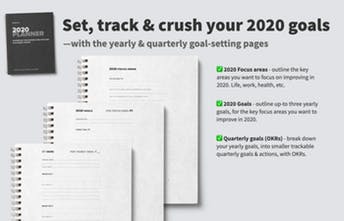
The six key tips to successfully achieve your 2020 goals
Successfully achieve your 2020 goals with a simple guide in this article.

“You have to set goals that are almost out of reach. If you set a goal that is attainable without much work or thought, you are stuck with something below your true talent and potential.”
— Steve Garvey
Setting personal or career goals are not some form of magic that will immediately make your dreams come true within a few seconds. But they can make your life more purposeful and give you something to look out for.
Successfully achieve your 2020 goals is not about writing impractical wishes about what you want for yourself; it is about challenging yourself to achieve more. When you create reasonable goals that are achievable in a healthy, allotted time frame, you are more likely to stick with them long-term.
Sometimes, you may face challenges setting or achieving the goals that you have set already. If it is your current situation, continue reading. We will share with you tips on how you can set your personal goals.
“All who have accomplished great things have had a great aim, have fixed their gaze on a goal which was high, one which sometimes seemed impossible.”
— Orison Swett Marden

How to effectively Successfully achieve your 2020 goals
- Think about what you want
It is essential to think about what you want in life or what your life goal is. When you know what you want ultimately, you can go ahead and set big-picture goals or life goals.
Asking yourself these queries will help you narrow down your ultimate goal:
- What are those things that can make me happy?
- Why do they make me happy?
- What are the things I should stop doing to achieve ‘my happiness’?
- What are those things that I do already that make me happy?
- How can I do more of those things that make me happy?
At this stage, it is right for you to note down everything that you love to do, and are important to you.
- Set ‘BIG PICTURE’ goals
When you know what you want ultimately, then you can now go ahead and set big-picture goals or life goals. Note down what is that one thing that you need to accomplish within the next five years. It provides you with a clear view of the different steps you need to follow to reach there.
- Set smaller goals
Once you have successfully set your big goals, the next thing to do is to set smaller goals that will assist you in reaching your long-term goals.
You can cut down your goals into smaller actionable ones, and break it down into the following:
- 5-year plan goals that will help you achieve the big-picture goal.
- A one-year plan goal.
- Create a six-month plan goal.
- One-month plan goal.
- Weekly goals.
- Daily to-do-list.<
- Set Priorities
You must set priorities when you set goals, especially if you set multiple goals. You should give each target a priority to Successfully achieve your 2020 goals.
Setting priorities will help you stay on top of all your goals and will prevent you from being overwhelmed by setting several goals. It will also offer you a sense of direction in your goals.
If you have too many goals, you should set a preference scale for your goals and how you want to achieve them. Some goals should come before others according to their priority.
“A goal without a timeline is just a dream.”
— Robert Herjavec
Make an Action Plan
The next step is to have an action plan that will help you Successfully achieve your 2020 goals that you set. If you have set a big goal, you must write down the steps so that you can re-visit it when you are confused.
- Focus on Your Action Plan
Setting a goal is one step and achieving it another. Once you make the plan, you need to try your hands at achieving it. For that, you need to make certain processes on your action plan. Without following those processes, it may be difficult for you to accomplish the ultimate goals.
Once you made an action plan, try and build a reminder to keep your soul on track. It is great to make out time to review your goals.
- Keep Track of Your Progress
Noting down your goals and the processes of achieving them will aid you to keep track of your progress. Re-visiting your goals and the methods will help you take note of your signs of progress towards the successes. Knowing that you are moving forward with your goals will encourage you to work harder.
Sometimes keeping track of your progress may not be easy, but you can even set up a process that will help you track your progress.
By setting goals, you will be able to make conscious choices on your career path. You can always adjust your plan if you need any changes, but the key is to give yourself a road map for success.
2020 is your year. So, set your goals, advance your career, deepen your knowledge, and find inspiration.
“Focused, hard work is the real key to success. Keep your eyes on the goal, and just keep taking the next step towards completing it. If you aren’t sure, which way to do something, do it both ways and see which works better.”
— John Carmack
Reach us for your recruitment needs at Hand Phone: +91 7795547089 or Email us at team@bssrecruit.com.

The ultimate guide on why should you consider taking Sabbatical over a career break?
Sabbatical over a career break is a fresh perspective from the regular routine to turn back and redo your career in a better way.

There was a time taking a career sabbatical was exceedingly rare. It was an experience constrained only for tenured professors after working years at a university. However, today, sabbaticals are becoming more and more common. Many employees take a sabbatical in between jobs to travel, spend time with family or simply relax.
What is a Sabbatical over a career break?
A Sabbatical over a career break is a fresh perspective on your life and work, often while taking on new challenges, and exploring new frontiers. It is another start in your career, which let you gain experience in an entirely new field. When you take a career break, you cannot join back to your current company. You need to end the working relationship before stepping out of your company for the break.
What is a Sabbatical?
A sabbatical is a period away from workspace with the security of returning to their job. The time allowed depends on the company you are working and may only be accessible to employees at a certain level in the organisation, such as senior managers or full-time staff. It is an ideal option for those who may be planning to return to the same job or field of work.
What are the reasons to take a sabbatical?
The reasons for taking a long leave or Sabbatical over a career break may differ according to a person’s personal and professional situation. Some of the common causes are –
- People who long for travel and adventure
- People who want a change as they are dissatisfied with their current routine
- People who want to take a break to recharge and unwind
- People who want to spend time with family
- People who want to train for a new career
The extended time of sabbaticals provides a great way to explore the options above.
Paid VS Unpaid Sabbaticals
A sabbatical usually is an agreement with your employer with the condition that you join back to your job after the leave. People often mistook a career break as a sabbatical. But, during the sabbatical, even in case they quit their job; the employee remains employed.
There are two main kinds of sabbaticals – paid and unpaid.
- Paid
During a paid sabbatical, the employee receives the full pay or a portion of their salary. Usually, companies grant paid sabbaticals to staff in leading roles for shorter periods of time. A paid sabbatical is obviously a Holy Grail. Yet, remember that there can be fine prints and obligations coming with a paid sabbatical.
- Unpaid
More commonly, sabbaticals are unpaid leaves of absence. The firm keeps the job on hold and commits to offering the same or equivalent position after the sabbatical return.
Benefits of Taking a Sabbatical
Even though there are several considerations worth taking into account before opting to go on a sabbatical, there are a lot of advantages to it as well. Most of the people who have taken sabbaticals come to treasure the memories they have made travelling, volunteering or pursuing their personal passion projects. Some simply take time off to relax or take care of personal matters, which leave them feeling revitalised and ready to take on new challenges at work upon their return. Others use the time to prepare for an entirely new line of work, honing the skills they need to secure their dream jobs. And still, others emerge from a sabbatical with a more profound understanding of who they are and what they want out of life.
When work-life gets extremely busy, finding time to unwind and relax may the last on your list of priorities. Sabbatical leave is an excellent way for you to have a long break away from work life. It is also an award for your hard work and years of service. Just like farm fields that need a rest, your brains do need some time to relax as well.
Sabbatical over a career break can not only be a unique and fantastic opportunity to relax and enjoy but also make you ready for the next phase in life. It is excellent for you to have some time away from the tight schedule and let your mind wander away from the work stress.
We hope that this Ultimate Sabbatical Guide prepared you well with everything you need to know about sabbaticals.
Reach us for your recruitment needs at Hand Phone: +91 7795547089 or Email us at team@bssrecruit.com.

Find out how a positive mindset in the workplace can help you achieve your goal
A positive mindset in the workplace is a necessity for career growth. A Positive mindset in the workplace can be a motivation for all in the workplace.
“Being positive is like going up a mountain. Being negative is like sliding down a hill. A lot of times, people want to take the easy way out, because it’s basically what they’ve understood throughout their lives.”– Chuck D
A positive attitude can help you to deal with life’s daily drudgeries more effectively and efficiently. It can improve your confidence, enhance your mood, and reduce the likelihood of developing conditions such as hypertension, depression and other stress-related disorders.
You can describe positive thinking as positive imagery, positive self-talk or general optimism, but these are all still general, ambiguous concepts. If you are effective in thinking and more positive, you will get the right direction to achieve the goal or purpose of your life.
Want to know how positive thinking can help you achieve the best in your life? Dive into the blog to get it.
“Once you replace negative thoughts with positive ones, you’ll start having positive results.”
– Willie Nelson

How a positive mindset in the workplace can help you achieve the best in your life?
- A positive mindset in the workplace helps Identify the Right Goals
To achieve success at work or in life, you must first identify your goals. It is where positive thinking plays a big part; right from the very beginning. The way you assess your strengths and weaknesses determine your goals for life.
A negative attitude can make you a loser even before you have started. With a negative attitude, you will choose all the wrong kinds of goals, and you will never feel strong enough to aim higher. Positive thinking makes you feel confident from within, which helps you opt the right directions.
- Positive Thinking helps you Stay Focussed
Achieving short-term or long-terms goals is not an easy task. Your best-laid plans can go haywire due to the unexpected happenings. You may become depressed and distracted and lose focus which takes you further away from your cherished goals and dreams.
Staying positive during such tough times can undoubtedly help you to stay focused and move forward with single-minded determination. If you stay positive and determined, you can concentrate on the job at hand and hit your goals faster.
- Positive Thinking helps you to Plan Better
Accomplishing goals faster is all about better planning and timely execution. You will reach your goal only when you can plan for the road ahead correctly and work towards it diligently. However, disappointments and failures are expected on the midway, and it can seriously jeopardise your chances of success. When you allow negative feelings and failures to overpower you; you cannot think or plan effectively. The fear of failing clouds your ability of rational thinking and you will slip down further into frustration and depression. Only positive thinking can bail you out of such desperate situations.
“The only place where your dream becomes impossible is in your own thinking.”
– Robert H Schuller
How to increase positive thinking in your life?
- By doing meditation regularly
- Writing down your thoughts
- Practising gratitude
- Visualise your goal and start working for it
- Eliminating negative thoughts
A list of positive attitudes
- Enjoy the unexpected happenings, even when it’s not what you wanted initially.
- Motivate the people around you with positive words.
- Use the power of a smile to reverse the tone of a situation.
- Never let other people’s negativity bring you down.
- Give more without expecting to get it in return.
- Being happy even when you have little.
- Having a positive future vision, no matter how bad your current circumstances.
Positive thoughts will help you to look forward in life. You will plan your road map again and examine your strengths and weaknesses rationally. Only then you can expect your approach correctly and hope to reach your goals promptly.
A negative mindset will only stand in the way of you reaching your goals. So, if you want to turn your dreams into reality, you need to change your attitude. Use these tips to create a positive mindset, and you can get rid of negativity to make room for progress.
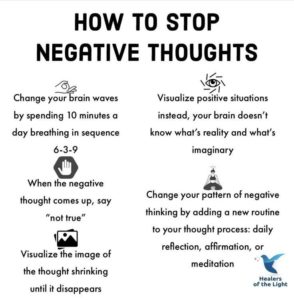
“It takes sunshine and rain to make a rainbow. There would be no rainbows without sunshine and rain.”
– Roy T. Bennett
Reach us for your recruitment needs at Hand Phone: +91 7795547089 or Email us at team@bssrecruit.com.
End of content
No more pages to load




